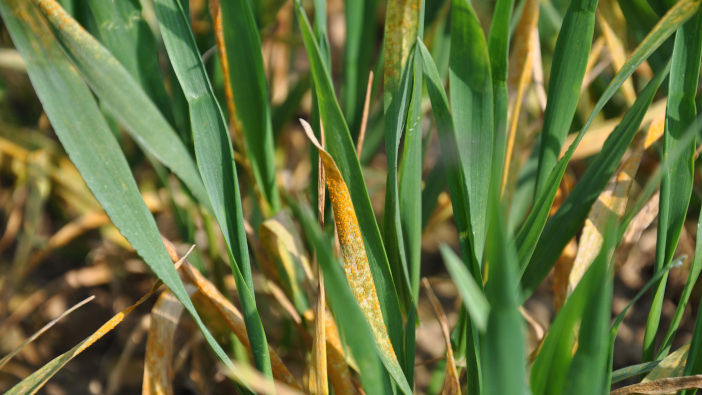Late-drilled fields, susceptible varieties and the mild winter mean that yellow rust could be a significant issue for wheat growers this season, according to Syngenta’s Joe Bagshaw.
The disease has the potential to inflict yield losses of up to 50% and so needs to be tackled early, before it has a chance to spread up the plant.
“Unlike septoria tritici, which is favoured by earlier drilling, yellow rust tends to be more of a problem in later-drilled winter wheat,” he explained. “Clearly, later drilling has been commonplace this season because of the washout weather. But several key varieties that are suited to later drilling also have low yellow rust resistance ratings,” he adds.
“On top of that, winter temperatures simply haven’t been cold enough to kill off the lower leaves where yellow rust is lurking.

“All this means we now have a bank of infection in the base of many wheat crops. This will need controlling before it spreads up to the top three leaves, because these leaves contribute about three-quarters of the final yield.”
Joe added that it will be vital to do the best possible job to safeguard yield potential, as this will already be depressed because of the later drilling. However, actions need to be cost-effective.
“Understandably, growers will be looking for cost-effective fungicides in the early part of the season. But it’s important to ensure these fungicide also provide proven yellow rust activity wherever this is a threat.
“Consult the fungicide dose response curves on the AHDB website, which show results on the reductions in yellow rust and yields achieved with different fungicides.
“Solatenol (benzovindiflupyr), which is the SDHI fungicide in Elatus Era, has repeatedly given top-level results in yellow rust situations. It also provides excellent value for money for protecting crops at the important T1 fungicide timing, which starts the process of protecting the top three yield-building leaves.
“After the rains, it’s also clearly important to stay on top of septoria tritici. Where later-drilled wheat crops contain lower levels of Septoria tritici, they should be in a more preventative situation than earlier-drilled fields. This again makes Elatus Era a good option to consider at T1 in these later-drilled situations,” he said.
For more information go to www.syngenta.co.uk


